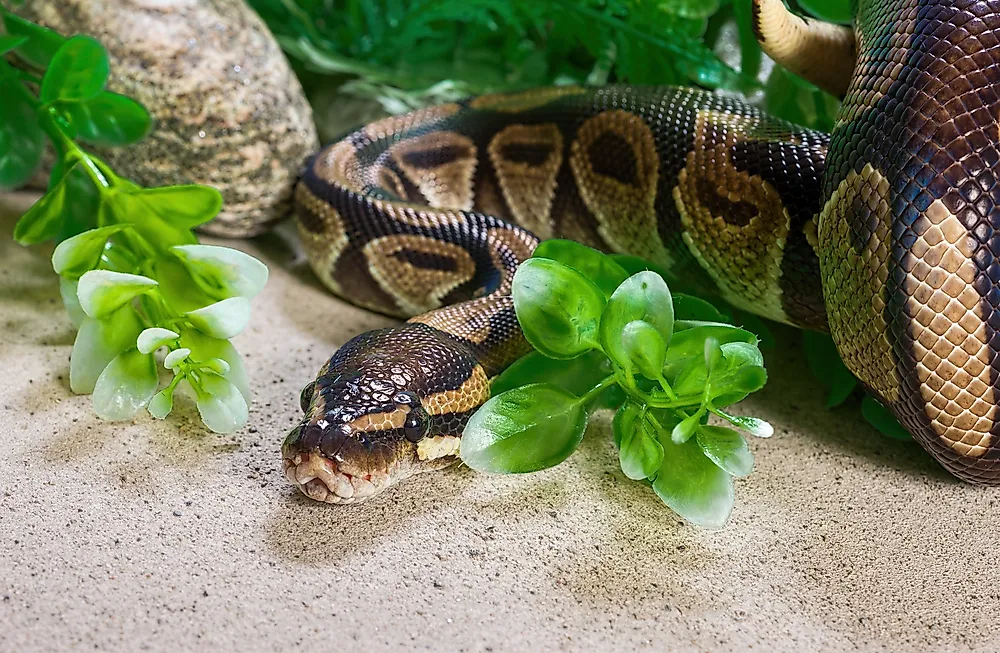Burmese Python Facts: Animals of Asia

Description
The Burmese python is among the five biggest snakes on the planet. The snake is native to Southeast Asia and the tropical south. The snake is dark colored with plenty of brown splotches. Due to its similarity with the African rock python, the two are commonly confused. Typically, the Burmese python grows to lengths of up to between 12 and 13 feet. Although females weigh more than males, they are shorter. The largest-ever Burmese python was named “Baby” and had a length of 18 feet and 10 inches. Baby lived in Serpent Safari, Illinois. Dwarf Burmese pythons are also present in areas such as Sulawesi, Java, and Bali. Dwarf forms range between 6 and 8 feet.
Habitat And Range
Naturally, Burmese pythons occur in the southern regions of Asia in regions such as Nepal, Thailand, Myanmar, Vietnam, Indonesia, Laos, and other regions. Most of these pythons in their natural habitats are fantastic swimmers who spend their lives close to permanent water sources. Other places where they are most likely to live include the likes of swamps, marshes, river valleys, and woodlands.
Pythons have also managed to invade areas where they don’t exist naturally. A good instance is the Florida Everglades, where more than 1,330 Burmese pythons have been captured. They were introduced to the Everglades after a python breeding facility was destroyed. Another source is through importation of the snakes. Eventually, in 2012, the importation of the python was banned by the US Department of Interior because the pythons were threatening local ecosystems.
Behavior
Burmese pythons are primarily nocturnal snakes. As young, they are comfortable in trees and on the ground. However, with age comes certain restrictions, so they spend most of their time on the ground. Their excellent swimming skills make them capable of staying submerged for up to half an hour. Sometimes, they may brumate.
Diet
The pythons are carnivores that eat birds and small mammals. Their diet includes mice, poultry, rats, and other kinds of vermin. Bigger pythons may even go for pig-sized prey either in the wild or close to human populations. The snake uses its sharp fangs to capture prey and then use its powerful body to wrap around it and squeeze prey to death. There are recorded cases of the pythons attacking alligators in Florida.
Reproduction
The breeding season for the snakes takes place during early spring where the females lay eggs numbering between 12 and 36. Females stay with the eggs until they hatch. Using their bodies, the pythons keep the eggs at the optimal temperature. The hatchling uses their egg tooth to break out of the eggs. Once hatched, the young ones are on their own, and the mother abandons them.
Threats And Conservation
Burmese pythons in the wild are deemed as threatened because they are hunted and killed for their leather, traditional cures, to be petted, and other things. Recently, the IUCN has classified it as vulnerable while in Hong Kong, it is a protected species.











